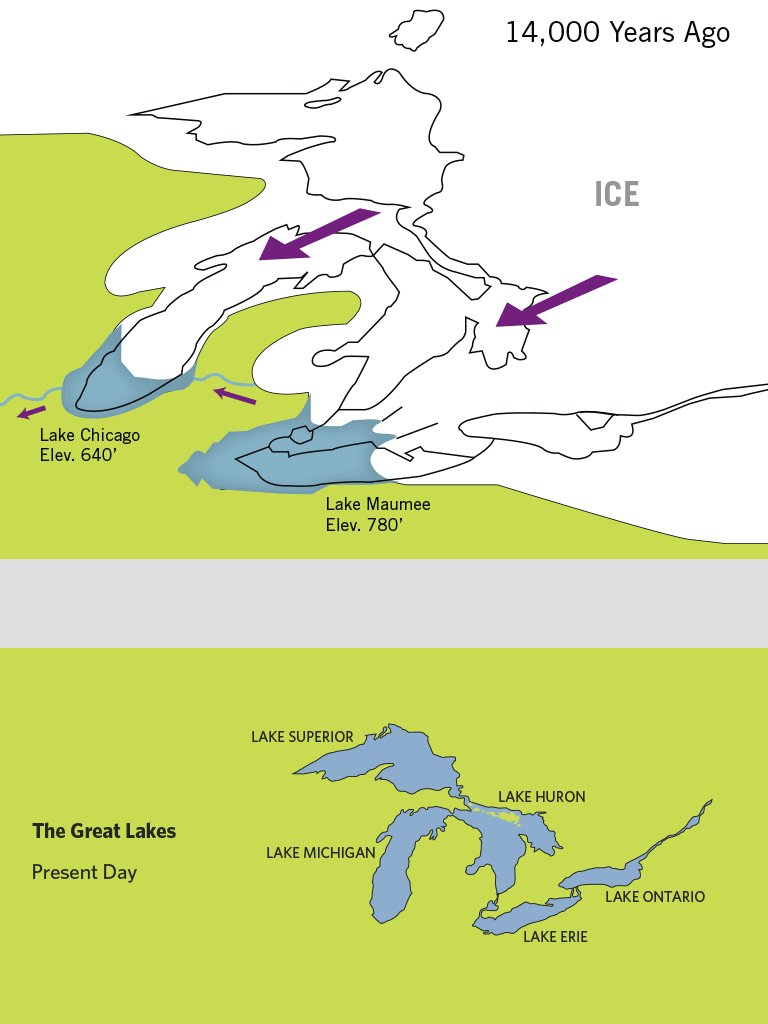Limestone
Glacier & Soil
Through the ages Ontario experienced glacial events that shaped and eroded the layers of sedimentary rock and ancient reef structures, creating the Niagara Escarpment, which forms a spine across southern Ontario between Lakes Huron and Ontario. Where it runs along the south shore of Lake Ontario – forming the Niagara Peninsula – there are very complex soil structures. There are gradations and pockets of sand, gravel and clay over limestone bedrock packed into a band between the lake shoreline and the crest of the escarpment. Supporting Niagara’s vineyards and orchards this band runs about 50kms east-west at varying widths. The same glacial events affected Prince Edward County but left a virtual island of limestone bedrock exposed in Lake Ontario, with topsoil less than a metre deep in some places; while on the shore of Lake Erie the limestone runs deeper below mixed sand and clay soils.
The soils in the Great Lakes basin vary from sand to clay to rock, with a high concentration of limestone from an ancient seabed that was exposed over a long period of glacial activity. Limestone is the same basic soil type also shared by Burgundy and other regions of northern France. Some of the vineyards lie flat on former seabed areas, while others are perched on hills and benches that formed the ancient shoreline. The topography is ideal for water drainage (too much moisture can dilute flavours), and provides nutrients and minerality to the grapes.
